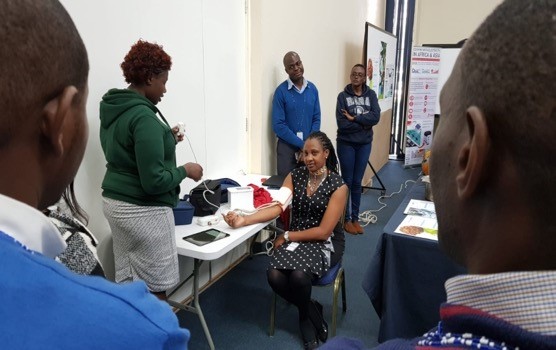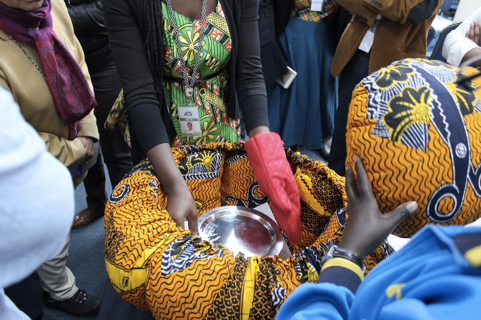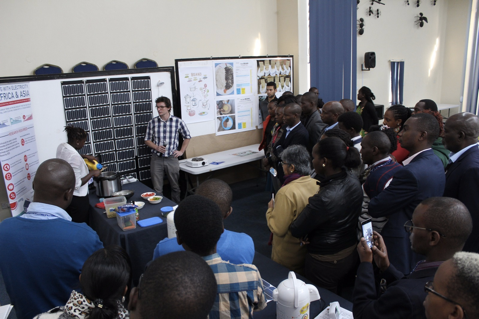LCT project dissemination workshop – clean cooking technologies
By Mourine Chepkemoi
The Next Generation of Low-cost Energy-efficient Products for the Bottom of the Pyramid (known as the LCT project) comes to an end in July 2018. To mark this occasion, the African Centre for Technology Studies (ACTS) organized a dissemination workshop on 17th July 2018 at ICIPE Duduville Campus, Nairobi.

Project Background
This was a fruit from the Institute for Globally Transformative Technologies at the Lawrence Berkeley National Lab’s (LBNL) ‘50 Breakthroughs study’. The main purpose of the study was to identify where paradigm-shifting breakthroughs are most required and in so doing launch a thought-provoking conversation among practitioners in the technology-for-development ecosystem to focus collective efforts to make these breakthroughs happen. This project was funded under the Understanding Sustainable Energy Solutions (USES) in Developing Countries Programme, which draws support from The Engineering and Physical Sciences Research Council (EPSRC) , The Department for International Development (DFID) and The Department of Energy & Climate Change (DECC) working with The Low Carbon Energy for Development Network (LCEDN) and The UK Collaborative on Development Sciences (UKCDS). The research was led by the Open University (UK) with a consortium of : Africa Centre for Technology Studies (Kenya), Gamos Ltd. (UK), The Institute for Globally Transformative Technologies (USA), Nairobi Women’s Hospital (Kenya), United International University (Bangladesh), and the University of Sussex.
Introduction to LCT Project
This first session introduced the project outlining the main achievements of the project in different presentations. Ms. Mourine Chepkemoi gave a general overview of the project pointing to its major activities and achievements over the course of the project. In her presentation she mentioned the project objectives being;
- New social research: Gather fresh insights into the demands of various BoP market segments for low-cost, energy-efficient products (for households, workplaces, and health).
- New technical research: Seek to understanding of essential design criteria for affordable energy-efficient technologies for the BoP market in Kenya (as a representative of other developing countries in Africa).
- Products to benefit the poor: Engage in developing, testing and deploying three of the most attractive and inspirational products that will benefit the BoP. As appropriate, adapt renewable energy products developed by our partner, United International University in Bangladesh for use in Kenya.
- Capacity building: Work with an Innovation Hub (already being developed by LIGTT and Nairobi Women’s Hospital with funding from other sources), universities and technical institutions in Kenya, supporting the training and funding of local engineers and entrepreneurs to build products.
A no cost extension was granted in December 2017 to finalize activities and reporting.
Exhibition 1
This was an enthralling session where all participants observed the cooking of soaked beans using a solar PV powered pressure cooker. Additionally, rice was brought to a boiling point on a hotplate and set aside in a Lindamoto Jiko (Fireless cooker/hotbox). The results were shown after the next session.
 |
 |
Project Presentations
 |
Ruth Njuguna gave a presentation on the health side. A major achievement has been coming up with a universal clinic in the box which has slowly been piloted in 3 regions in Kenya. She mentioned that the main gadgets targeted in the clinic in the box were: Infant warmers, vaccine fridge, software App and point of care diagnostic devices. She also did some demonstrations using the mentioned technologies operating on rechargeable batteries and powered by solar.
Mourine Chepkemoi presented results of a market survey done in 2015/16 using discrete choice modeling methodology. The findings of the survey advised the team on the technologies to push forward: Clinic in the box, solar powered e-cooker and a forced draft with a two chambers improved cookstove that has a fan that accelerates air into the cooker.
Jon Leary presented on eCook and the Kenyan cooking diaries survey, where 20 Nairobi households have been using energy-efficient electric cooking appliances to use in their houses. This will give a detailed report on each household’s actual spending on cooking and allow direct comparisons between charcoal, kerosene, firewood, LPG and electricity. The initial feedback from households has been positive, but as data collection is only just finishing, the final outcomes are not expected until next month.
Jacob Fodio Todd presented the forthcoming Nairobi eCookBook, which is designed to help people understand energy efficiency and acquire tips on how to cook efficiently. Different Kenyan dishes were cooked by cooking diary participants using their unique techniques with their recipes, method and energy consumption meticulously recorded in eRecipes.
Teresa Muchiri, the business mentor gave a brief of the mentorship programme she has undertaken with the entrepreneurs and mentioned the achievements and challenges she faced. Project proposals will be the main output and entrepreneurs can use it to fundraise or acquire funds from the microfinance institutions.
Exhibitions 2
Ready food was already sending a whiff into the room by the end of the presentations, so all participants went to discern the results of the cooking demonstrations. The results were impressive: the beans were well cooked and the rice too. The idea behind the rice demonstration was to showcase the ability of the Lindamoto jiko to cook without any power - it proved really impressive as the previous session extended by 20 minutes and the rice was overcooked! The beans were cooked in an automatic electric pressure cooker which stops when the set time comes to an end, meaning the cook can go off and focus on other things whilst the food is cooking.
 |
 |
Conclusion
Dr. Ann Kingiri led the concluding session and participants contributed to a lot with insightful information. Most participants appreciated the new technologies and advised on pushing on with the project, the private sector audience agreed that this was the best way to go. Although many saw the new technologies as expensive (in particular eCook), there was a high hope that things will advance rapidly similar to the mobile phone industry where things were really expensive and eventually costs came down to prices many people can now afford. It was suggested that by partnering with micro-finance institutions such as Kenya Womens’ Microfinance Bank, or building upon the pay-as-you-go business models of many of the solar companies in attendance, the high initial costs of the system could be broken down into repayments that are comparable to how many are currently paying for charcoal and kerosene. Behaviour change was noted as a big issue with many of the new technologies and therefore there will be a need for awareness raising, social marketing and training to facilitate the adoption these new products. This could be carried out in partnership with educational institutions.
The actual cost savings based upon the cooking diary surveys show that the cost savings of switching to electricity are significant and this should be clearly communicated to potential when the prototypes are brought to the market. The project has brought a big opportunity to link electricity access and clean cooking, as well as renewable energy and energy-efficiency. The electric pressure cooker was popular amongst the cooking diary study and the workshop participants, however they are currently very difficult to acquire in Kenya. This was identified as a key opportunity to offer a new affordable, reliable, modern and clean cooking solution to grid connected households today. However, it was highlighted that the nutritional value of the food cooked in these devices should also be investigated as well as the cooking procedure and not just focusing on the cost and time savings of cooking.
